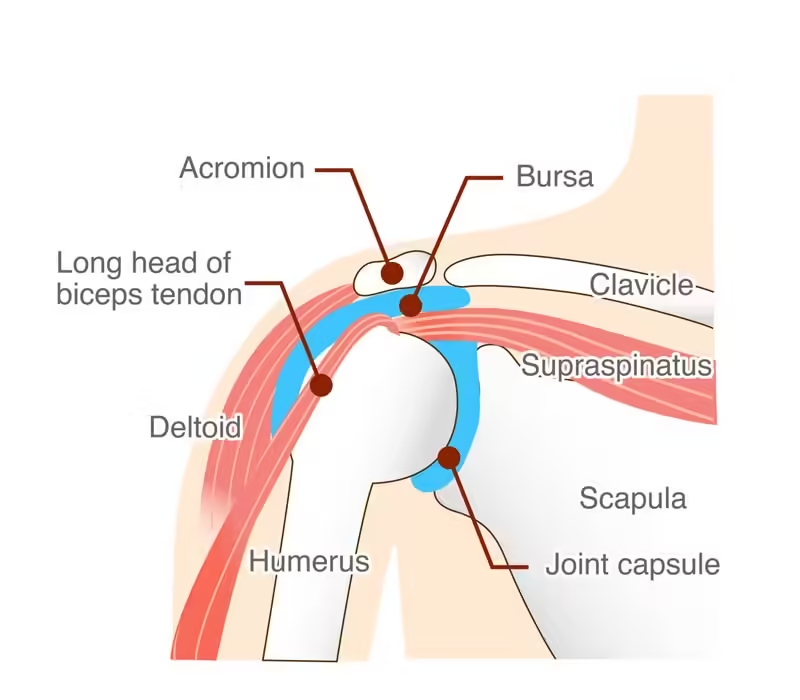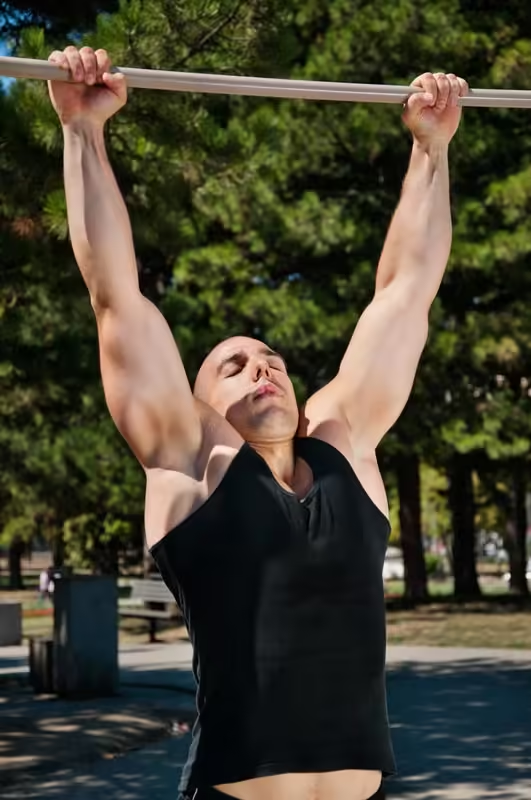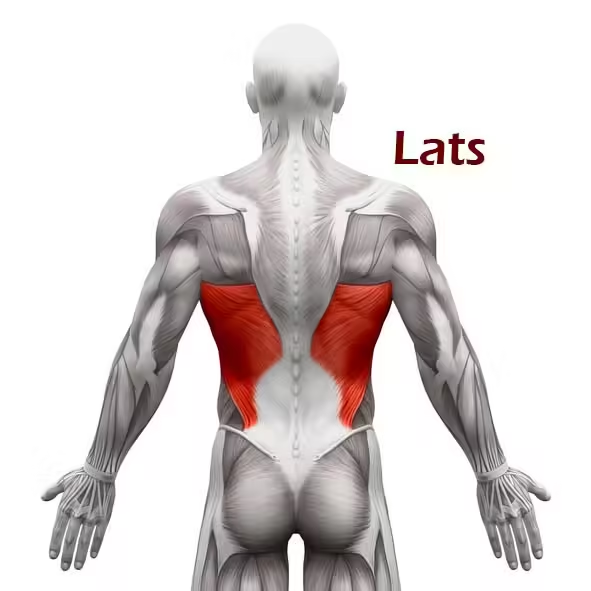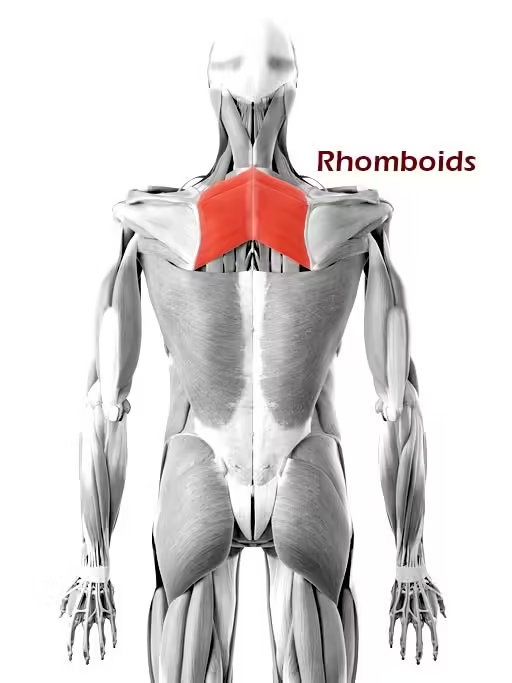If you’re looking to add mass to your shoulders and back, look no further than scapular pull ups. This bodyweight exercise provides a great addition to any training program. Our detailed guide will give you everything you need to get started.
When you think of traditional strength and hypertrophy-focused lifting routines, traditional pull-ups are usually the favoured option. However, the movement pattern in scapular pull ups offers several unique benefits which make them worth considering.
Let’s take a look at the scapular pull-up in more detail!
Firstly, Where is your Scapula?
Your scapula is actually one of 3 bones that make up your shoulder blade. The other two being the humerus, and the clavicle.


What Are Scapular Pull Ups?
Scapular pull ups are a functional upper-body exercise that use a smaller range of motion than traditional pull ups. They primarily involve scapular retraction; bringing your shoulders back and chest out. This places most of the focus on your shoulder and back muscles.
Scapular pull ups are not traditional pull ups.
They are a supporting exercise designed to build the muscles used to perform full pull ups. Thus, if you’re a beginner or intermediate level enthusiast, make sure you’re spending time on this.
While scapular pull ups look simple enough, the technique can often be hard to get right at first without practice.
GRAVITY FITNESS PULL UP BAR
Portable, versatile, home fitness
- Highly versatile- suitable for a full range of exercises including pull ups, dips, leg raises, incline press ups and front and back levers
- Extended height: 192cm
- Compact position height: 120cm
- 3-year warranty against manufacturer defects
- Carry bag included
ONLY £139.95 £109.95
What is Rcapular Retraction?
Scapular retraction is essentially bringing your shoulder blades back and down; a movement that retracts your shoulder blade along the scapular plane.
Check out this video for a quick reference guide, then move on to the hows below.
How To Do Scapular Pull ups
How to perform a proper scapular pull-up:
- Start by gripping a pull-up bar with an overhead grip. Ensure your grip is slightly wider than shoulder-width.
- Hang from the bar with your elbows slightly bent. Engage your core whilst taking a deep breath in. Squeeze your quads and glutes, ensuring your pelvis is slightly tucked.
- Whilst keeping your arms straight, bring your shoulder blades back and down. Imagine pulling them down to your hips without moving your arms
- Squeeze the muscles in your upper back and pause briefly in this position.
- Allow your shoulder blades to move back up and away from your hips. As you lower back to the starting position, take a breath out.
If you fancy adding more variety to your workout, we also have a guide looking at the best pull-up bar exercises once you’ve finished reading.

Scapular Pull Ups Muscles Worked
Your scapular, more commonly known as your shoulder blade, is a triangular-shaped bone that attaches your arms (humerus) to your torso within the shoulder joints. It is involved in several movements which include scapular retraction.
Scapular retraction is controlled by three primary muscle groups:
- Latissimus Dorsi – These are some of the largest muscles in your back. They help to adduct, medically rotate, and extend your arms at the glenohumeral joints.
- Rhomboids – Consisting of the rhomboid major and minor, these connect your scapular to your vertebrae. They retract, elevate, and rotate your scapular.
- Trapezius – Large, superficial muscle of your upper back. Alongside the rhomboids, these also help to stabilise and move your scapular.



These three muscle groups allow you to perform scapular pull ups without using your biceps and forearms.
Alongside this, your core muscles contract to keep you stable as you initiate the movement. These consist of your rectus abdominis, transverse abdominis, erector spinae, and obliques.
Benefits of Scapular Pull ups
The movement pattern and shorter range of motion used for scapular pull ups offer several useful benefits.
Improved Scapular Mobility
Regularly performing scapular pull ups helps to improve the range of motion in your shoulder blades. This leads to better scapular mobility.
Being able to retract your shoulder blades with no impingements helps to keep a better posture. This can be particularly beneficial for people who perform desk-based jobs and need to sit for long periods.
Targeted Muscle Isolation
Scapular pull ups require you to retract your scapulae. This means that you need your shoulder and back muscles to bring your shoulders back and down.
By doing this, you are isolating your back and shoulders rather than also using your forearms and biceps like in a traditional pull-up.
If you’re looking for a good way to work both these muscle groups whilst improving mobility, scapular pull ups are a great option.
GRAVITY FITNESS PULL UP BAR
Portable, versatile, home fitness
- Highly versatile- suitable for a full range of exercises including pull ups, dips, leg raises, incline press ups and front and back levers
- Extended height: 192cm
- Compact position height: 120cm
- 3-year warranty against manufacturer defects
- Carry bag included
ONLY £139.95 £109.95

Injury Prevention
Improving scapular stability and control by performing scapular pull ups is a good way to improve shoulder health and reduce injury risk.
A good example would be winged scapular. This results from an inability to stabilise your scapulae, causing a winged-like appearance.
Scapular Pull-up Variations
Once you’ve mastered normal scapular pull ups, you can try these variations below. We’ve included an easier and a harder version depending on your ability level.
Assisted Scapular Pull Ups
If you can’t quite master normal scapular pull ups yet, start with the assisted version.
Start by placing a resistance band around the pull-up bar. Place a foot inside the hanging end of the resistance band before starting the pull-up.
The idea is that the tension of the band will assist you on the way up and help bring you back down under control.
Weighted Scapular Pull Ups
If you’ve mastered normal scapular pull ups, try weighted scapular ones to turn them into more of a strength-building exercise.
Before performing a normal scapular pull-up, add a weighted vest or belt to increase the difficulty. Adjust the weights as needed, ensuring you can still use the correct form.
Burpee Scapular Pull Ups
These offer a great way to add some cardio training to your pull-up routine. They combine two common movement patterns; the burpee and the pull-up.
In the scapular version, start by performing a normal burpee. Jump onto the pull-up bar and perform the steps listed above. Ensure you don’t use the momentum of the burpee for the pull-up.
Tips And Safety Considerations
Using the tips and safety considerations below can help to improve your form and prevent injury.
- Make sure you focus on retracting your scapulae before initing the movement. Avoid using momentum or jerky movements.
- If you’re struggling to feel your scapular retracting, it’s likely because your muscles are still relatively weak. This will improve over time and with practice you’ll soon be able to retract them with ease.
- Avoid using your arms and biceps to perform the pull-up. If you feel them working, you’re likely not doing them correctly.
- If you have any pre-existing health conditions, ensure that you visit a healthcare professional who will assess your suitability to exercise.
- Before progressing onto weighted scapular pull ups, ensure you can perform the correct form for each repetition.
If you’re struggling with your pull-ups, heres a good guide on how to fix weak links.
Closing Comments
Despite their smaller range of motion and initial learning curve, scapular pull ups are a great exercise to program into your back and shoulder routines. They provide a great way to isolate both muscle groups and improve posture when performed correctly.
Once you’ve read this guide, add them to your routine and let us know how you go!




